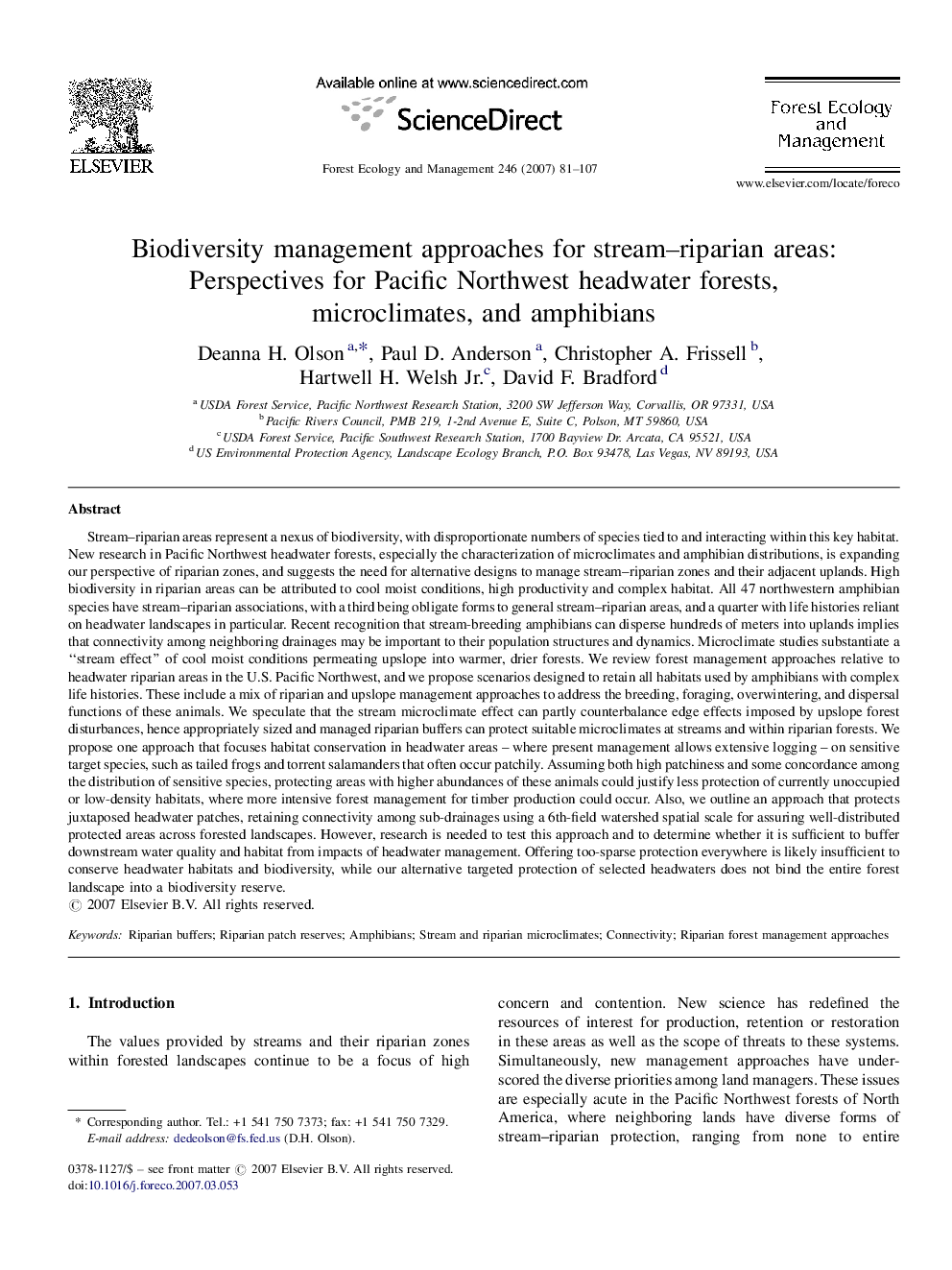| کد مقاله | کد نشریه | سال انتشار | مقاله انگلیسی | نسخه تمام متن |
|---|---|---|---|---|
| 90565 | 159388 | 2007 | 27 صفحه PDF | دانلود رایگان |

Stream–riparian areas represent a nexus of biodiversity, with disproportionate numbers of species tied to and interacting within this key habitat. New research in Pacific Northwest headwater forests, especially the characterization of microclimates and amphibian distributions, is expanding our perspective of riparian zones, and suggests the need for alternative designs to manage stream–riparian zones and their adjacent uplands. High biodiversity in riparian areas can be attributed to cool moist conditions, high productivity and complex habitat. All 47 northwestern amphibian species have stream–riparian associations, with a third being obligate forms to general stream–riparian areas, and a quarter with life histories reliant on headwater landscapes in particular. Recent recognition that stream-breeding amphibians can disperse hundreds of meters into uplands implies that connectivity among neighboring drainages may be important to their population structures and dynamics. Microclimate studies substantiate a “stream effect” of cool moist conditions permeating upslope into warmer, drier forests. We review forest management approaches relative to headwater riparian areas in the U.S. Pacific Northwest, and we propose scenarios designed to retain all habitats used by amphibians with complex life histories. These include a mix of riparian and upslope management approaches to address the breeding, foraging, overwintering, and dispersal functions of these animals. We speculate that the stream microclimate effect can partly counterbalance edge effects imposed by upslope forest disturbances, hence appropriately sized and managed riparian buffers can protect suitable microclimates at streams and within riparian forests. We propose one approach that focuses habitat conservation in headwater areas – where present management allows extensive logging – on sensitive target species, such as tailed frogs and torrent salamanders that often occur patchily. Assuming both high patchiness and some concordance among the distribution of sensitive species, protecting areas with higher abundances of these animals could justify less protection of currently unoccupied or low-density habitats, where more intensive forest management for timber production could occur. Also, we outline an approach that protects juxtaposed headwater patches, retaining connectivity among sub-drainages using a 6th-field watershed spatial scale for assuring well-distributed protected areas across forested landscapes. However, research is needed to test this approach and to determine whether it is sufficient to buffer downstream water quality and habitat from impacts of headwater management. Offering too-sparse protection everywhere is likely insufficient to conserve headwater habitats and biodiversity, while our alternative targeted protection of selected headwaters does not bind the entire forest landscape into a biodiversity reserve.
Journal: Forest Ecology and Management - Volume 246, Issue 1, 16 July 2007, Pages 81–107